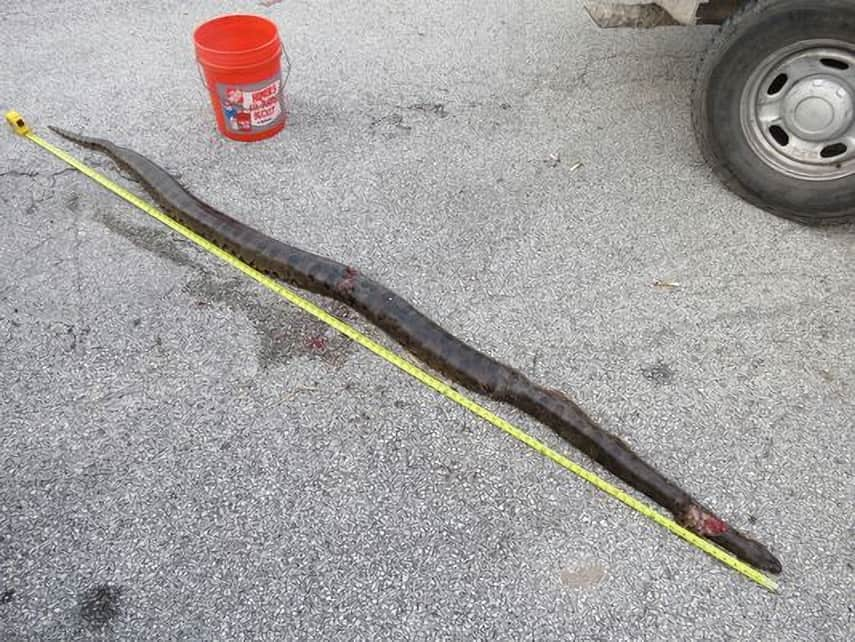Florida Wildlife Officers Shoot 9-foot Anaconda in the Wild
OutdoorHub Reporters 12.03.15

There are plenty of snakes in the Sunshine State—including the notorious and worrisome Burmese python, but wildlife officers with the Florida Fish and Wildlife Conservation Commission (FWC) were surprised when they got a call from an angler regarding a nine-foot anaconda near the St. Johns River in Orange County on Monday.
Green anacondas are commonly recognized as the largest and heaviest species of snakes alive today and are not native to Florida.
“It wasn’t skinny,” Derrick Lockhart, a captain at Midway Air Boat Rides who saw the snake, told clickorlando.com. “It was eating, or it was recently dropped off and had something to eat.”
If it was eating a meal at the time, then it would be its last.
“Green anacondas are conditional nonnative species and are considered to be dangerous to the ecology and/or the health and welfare of the people of Florida. When the snake began to make its way toward the water before our trapper arrived, the officers had no choice but to euthanize the animal to prevent it from escaping,” The FWC wrote on Facebook.
According to FWC spokesperson Lenny Salberg, officers shot the snake before it was able to reach the water.
“We won’t let that snake go back in the wild, due to the ecosystem,” Salberg told Florida Today.
The state already has enough invasive snakes living within its borders, not the least of which is the Burmese python. One of the largest snakes in the world, the pythons now have a sizable population inside the Florida Everglades, which wildlife officials are trying to eradicate. Unlike the python, however, anacondas also have notorious reputations for being man-eater, although scientists say it is very unlikely for the snakes to target humans for food. This reputation is mostly furthered by movies such as the 1997 film Anaconda, which portrayed the snakes as larger-than-life monsters.
FWC officials say they found no PIT tag on the snake, which is mandatory for legally-owned anacondas in the state. It is assumed that the snake was illegally transported into the state, although officials have no idea how long it has been in the wild.
Anacondas can grow up to 30 feet in their native range in South America. While their appetite for humans may be overblown by Hollywood, the large snakes can be very dangerous to small pets and even children. Anacondas have been known to consume deer, wild pigs, and large predatory cats such as jaguars.

